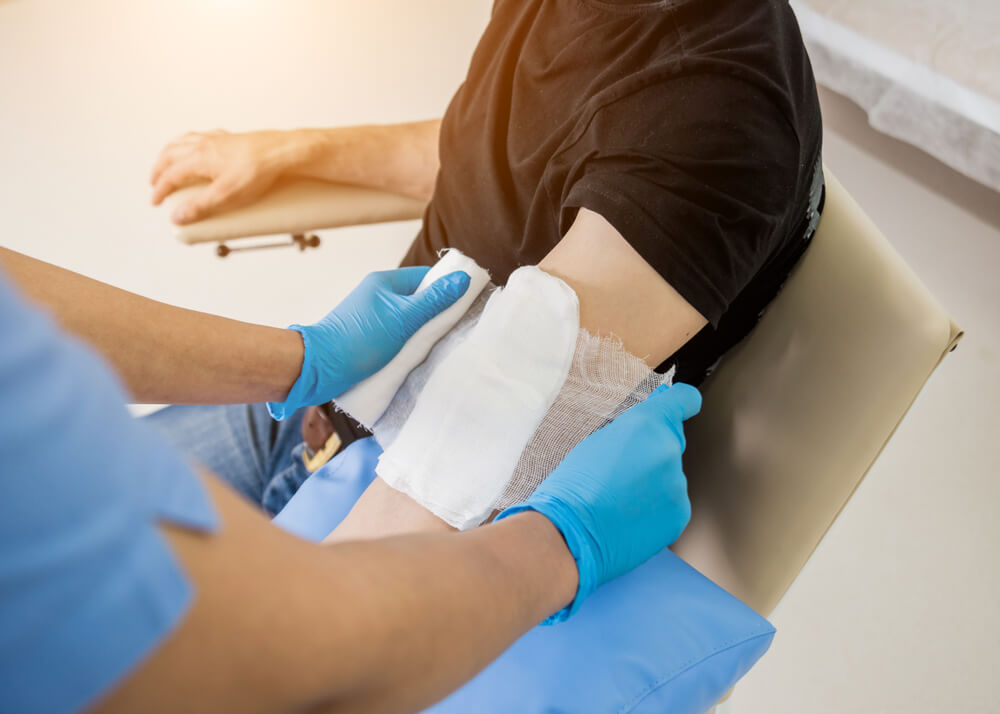Throughout life, it’s common to experience different types of injuries. This is especially true for young people. When people scrape their skin, the wound healing process begins, allowing for a full recovery. However, sometimes an injury results in a non-healing wound.
How to Tell If a Wound Is Healing
During the healing wound steps, there are four stages a wound goes through:
- Hemostasis
- Inflammatory
- Proliferation
- Maturation
During these stages, there are clear indications that a wound is successfully healing. These consist of:
The healing wound is bleeding or scabbing – When a skin cut or puncture first occurs, it will bleed. After a short duration, the blood will begin to dry, causing it to clot and then progress to scabbing. If the wound continues to bleed for a significant amount of time after the injury has happened, with no scabbing present, then it’s recommended to consult your doctor.
Those experiencing burns or pressure ulcers cannot refer to this set as they do not bleed.
It begins to swell – Once your immune system begins the wound healing process, the afflicted area will feel swollen and become tender. Swelling is a good indication that the body is performing as intended to heal the wound. It’s also common that the area feels wet as oxygen, blood, and nutrients are pumped internally to the area to clean it.
New tissue begins to develop – A clear indication to understand how to tell if a wound is healing is after the swelling stops. New tissue will form over the area in question. If the wound is small, this process can last a few weeks. During this stage, the body fixes broken blood vessels and replaces the damaged tissues with new ones. You can easily identify this stage as the wound edges reduce in size until it is no more.
Scars are visible – The final stage results in the wound only being visible by a scar. For small wounds, it’s likely that the scar will completely fade within two years. However, larger ones may always be present after fading a certain amount.
Wound Not Healing? How to Tell

Not every wound is the same, and the quickness of a healing wound can differ on the individual, with their overall health playing a factor in the process. Although, some distinct non-healing wound signs may indicate an individual should seek a doctor’s advice.
Unpleasant smells originating from the wound – A clear sign the injury is not recovering correctly would be when it starts to emit a strong unpleasant odor. When this occurs, it is typically a result of dead tissue. If it persists, then it’s best to contact a health specialist.
Heavy discharge coming from the affected area – Infections can develop if a wound is not healing properly. This can be determined if discharge that looks white, yellow, or green is coming out of the injury. Usually, a foul smell will occur alongside discharge. Extreme care must be taken when clearing the area to prevent the issue from becoming worse. If this continues for an extended amount of time, it’s best to contact a health professional.
Other issues showing wound not healing – There are a few other indications that individuals should pay attention to when dealing with a non-healing wound. These include:
- Redness or swelling
- Skin feels hot
- Fever
If the wound healing process shows any signs of the wound not healing, seek medical advice.
Contacting a Specialist
If you still want to gain some clarification on how to tell if a wound is healing in the Palm Beach County, Florida area, book an appointment today.
At Advanced Surgical Physicians, we work hard to provide the best possible care to all patients.


